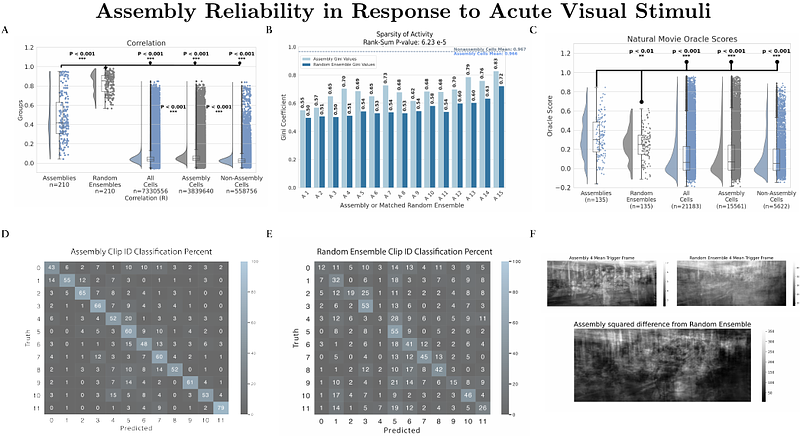Hebb's Vision: The Structural Underpinnings of Hebbian Assemblies

Hebb's Vision: The Structural Underpinnings of Hebbian Assemblies
Wagner-Carena, J. A.; Kate, S.; Riordan, T.; Abbasi-Asl, R.; Aman, J.; Amster, A.; Bodor, A. L.; Brittain, D.; Buchanan, J.; Buice, M. A.; Bumbarger, D. J.; Collman, F.; da Costa, N. M.; Denman, D. J.; de Vries, S. E.; Joyce, E.; Kapner, D.; King, C. W.; Larkin, J. D.; Lecoq, J.; Mahalingam, G.; Millman, D.; Molter, J.; Morrison, C.; Reid, R. C.; Schneider-Mizell, C. M.; Daniel, S.; Suckow, S.; Takasaki, K. T.; Torres, R.; Vumbaco, D.; Waters, J.; Wyrick, D. G.; Yin, W.; Zhuang, J.; Takeno, M.; Mihalas, S.; Berteau, S.
AbstractIn 1949, Donald Hebb proposed that groups of neurons that activate stereotypically form the organizational building blocks of perception, cognition, and behavior. He theorized that repeated activations induce the structural changes needed to group neurons in these assemblies. Despite Hebb's enduring influence, testing his predictions at relevant scales has been technically challenging. Here, we test the theory using a novel, large-scale dataset featuring in vivo calcium fluorescence imaging of neural activity with postmortem electron microscopy (EM) for detailed reconstruction of neurons from the same volume of mouse visual neocortex. A coregistration process matches EM-reconstructed neurons to their recorded fluorescence traces. From these traces, we extract neural assemblies from higher-order correlations in neural activity. We find multiple assemblies, many with overlapping neurons, and some neurons that do not participate in any assembly. We then show that these assemblies exhibit properties consistent with Hebb's theory, including more reliable responses to repeated natural movie inputs than size-matched random ensembles and superior decoding of visual stimuli. Using coregistration to probe structural correlates, we find that neurons that participate in assemblies are significantly more integrated into the structural network than those that do not. Contrary to Hebb's original prediction, we do not observe a marked increase in the strength of monosynaptic excitatory connections between cells participating in the same assembly. However, we find significantly stronger indirect feed-forward inhibitory connections targeting cells in other assemblies. Intuitively, the delineation of assemblies can be realized either by internal excitation or external inhibition. Our findings support the latter mechanism. These results show the utility of assemblies in perception and provide a structural underpinning. They lay the foundation for future studies looking at the utility of assemblies in cognition and behavior, as well as the mechanisms for the formation and maintenance of such assemblies.